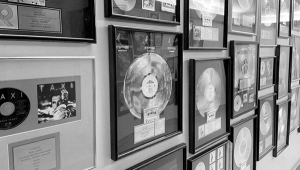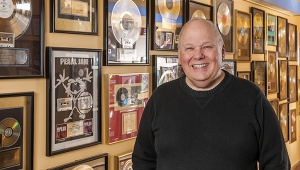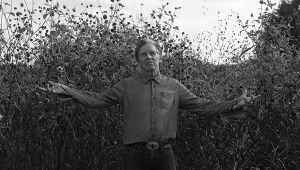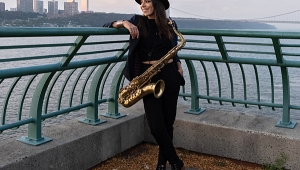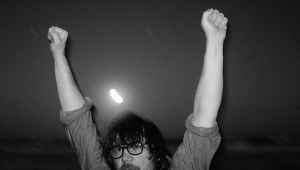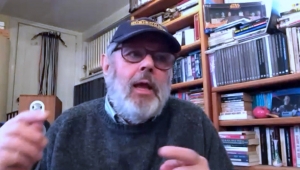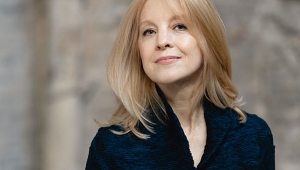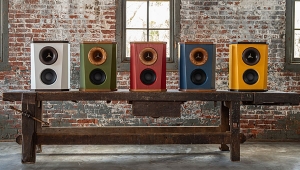| Columns Retired Columns & Blogs |
Poem: Stereophile Cuts an LP The Recording Engineer part 2
Alexander: The MR70 is an unusual machine in that, first of all, it was the last tube machine that Ampex ever made, but second, it was never marketed. They put three years of solid R&D into the project in the mid '60s, selecting parts that would be typical of some high-end audio company today: they used gold connectors, they selected the capacitors, in fact all passive components, on the basis of sound quality as well as long-term reliability. They used the very best components that money could buy at that time. The cast frame on to which the transport is mounted is probably one of the heaviest made. The transport itself is unique. It uses a silicone-damped reel idler that does not exist on any other machine. The MR70 uses a very heavy flywheel with a very good scrape-flutter filter, and there are even air grooves cut on the guides that the tape runs over. People who have worked on old Ampexes—there is an elderly gentleman up north who has helped me a lot with this machine—he tells me that the MR70 has the lowest wow & flutter of any machine Ampex ever made.
Footnote 1: Water Lily Acoustics at P.O. Box 91488, Santa Barbara, CA 93190, Tel: (805) 968-8188.

Atkinson: Even less than more modern recorders?
Alexander: Oh yes. The ATR100, which you are familiar with, is a servo-tracking system; it's always chasing its own tail.
Atkinson: Perhaps the fact that the MR70 is an all-tube machine is less important than the fact that it is mechanically so well-made.
Alexander: I think it's a combination of both, because the circuitry is also very special. Ampex did some clever tricks in coupling the heads to the electronics. They experimented with triodes, nuvistors, and transistors, and chose to use nuvistors for two reasons. First, the nuvistor had the best overload characteristic compared with triodes and transistors of that vintage, and second, it had a long life and was rugged. The machine as it stands, the one that we used, has 14dB of headroom over 0VU. There's headroom to burn; it's pretty much impossible to overload that machine. The only limiting factor as it came from the factory were the input transformers, which were made by Beyer in Germany. They were plug-in modules, however, so you could replace them with anything you wanted. Before I got Tim's mic preamp, I had transformers from Tim, but since I got the preamp which has output transformers, I am running the MR70 inputs unbalanced, without transformers.
Atkinson: If this machine was so special, why were only a few sold?
Alexander: It wasn't even sold, really. What happened was that they spent so much money on the program that when the machine was ready to be released—I think it was in 1965—the two-track quarter-inch was priced at $6000, which was an enormous sum of money at that time. But Scully had just released their first solid-state machine, which was going to sell for $2000, so Ampex figured that everyone was going to run after the new technology which was far less money. They scrapped it, therefore. Only 80 MR70s were ever made. That's it. Most of them stayed here in California.
Atkinson: It appears that yours was originally owned by Elektra Records.
Alexander: Well, I actually have two machines: a quarter-inch which I bought from Arnie Nudell—the manual is actually from that machine, and I have a very special love for that one because I used to love Elektra records. I have a fantasy that some of my favorite records were actually mastered on that machine, but I doubt it. The half-inch I bought from Neil Sinclair of Theta Digital. It was a half-inch four-track, so I had Tim build me custom two-track heads for it.
Atkinson: I noticed that on some of your album sleeves, you refer to this machine as the "Jack Mullin Special."
Alexander: When I made my first album on the MR70, which was the José Neto album of Brazilian guitar music, the machine went dead during one of the sessions. The people who usually keep the machine maintained weren't available—I had to get the machine running again as the musicians were waiting, and I remembered that the late Jack Mullin, who was a real hero of audio, lived nearby. I called him at home, he was very gracious, it was about 8 o'clock, he was having dinner, but he was there in about 15 minutes, and after four hours on his knees, he found the problem and fixed it. The umbilical bias cord that connects the transport to the electronics had broken. So as he had saved my life, I thought I would dedicate the machine to him.
Atkinson: You first used the MR70 and Tim's mics and preamp for the Arturo Delmoni album sponsored by Apogee Acoustics. What other projects does Water Lily Acoustics have going at the moment?
Alexander: The Arturo album, and an album of guitarists Strunz and Farah that I recorded for AudioQuest, were both done last December. Since then, we have two recordings that were funded by George Cardas, one of Ali Akbar Khan and another one of Hamza El Din, an oud player from Sudan. He is one of the great masters of the instrument; he came to the US I think in 1964 and made a bunch of records for Vanguard and later on for Nonesuch. Our gospel record was funded by The Absolute Sound, and all three will be coming out at the same time, plus Volume Two of the L. Subramaniam album. Volume One is already out. The title will be Electric Modes. I'm now editing a recording of traditional Irish music funded by AudioQuest.
Footnote 1: Water Lily Acoustics at P.O. Box 91488, Santa Barbara, CA 93190, Tel: (805) 968-8188.
- Log in or register to post comments

